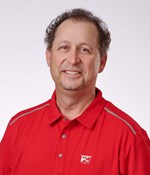Agronomy Update: Soybeans, Leaf-Feeding Insects and Sudden Death Syndrome
BY DAIRYLAND SEED AGRONOMY TEAM
Leaf-Feeding Insects Going to Work in Many Soybean Fields
It’s that time of year when leaf-feeding insects in soybeans, like grasshoppers and Japanese beetles, raise a lot of eyebrows and sometimes look worse than they are. It can be quite alarming to walk into a field and notice all the damage in the upper canopy.
Currently bean leaf beetle (BLB), Japanese beetle (JB) and grasshoppers have been feeding in soybeans in many areas. Grasshopper populations are exploding where the weather has been hot and dry. I have seen all three of these insects in the same field and sometimes side by side. BLB not only chews soybean leaves but may transmit pod mottle virus to soybeans which causes malformed seed and pods, green stem and yield loss. Japanese beetles and grasshoppers feed heavily on soybean foliage. All three of these insects may feed into September. As soybeans mature, pod feeding may occur.


When you notice feeding damage, try not to focus only on the upper canopy. Evaluation of percent defoliation is based on the entire plant not just the top leaves. Generally speaking, if target insects are still active and it looks as if the percent feeding will continue towards 40 percent through R2 growth stage or 20 percent from R3- R6, treatment may be justified. Estimating percent defoliation is kind of tricky and many overestimate defoliation. Below is a graphic to assist you in making a decision on percent defoliation.

Suddenly, It’s That Time of Year
The first few days of August and Sudden Death Syndrome (SDS) tends to rear its ugly head. As with any disease, the level of severity changes with the environmental conditions each year. This year it’s not surprising that we are seeing SDS issues.
Contrary to what some may believe, the initial SDS infection occurs in early spring of the year and not in August when we see the telltale signs of the disease. SDS tends to favor early planted soybeans and, in many areas, we had soybeans planted very early. Cool damp soils and especially compacted soils will encourage SDS infections.
The other factor common with SDS is Soybean Cyst Nematode (SCN). The SDS organism overwinters in the soil in crop residue and in the soybean cyst which is why there is a close association between SCN and SDS. Losses from SDS range from minimal to, in some cases, severe.
Identifying SDS tends to begin with rather simple interveinal chlorosis and necrosis of leaves. Then those leaves drop leaving only the leaf petiole. Final diagnosis includes splitting the stem to look for discolored stem cortex. Brown stem rot can have similar leaf symptomology but will have a discolored pith when the stem is split. Below is an excellent example of typical discolored cortex versus bright white pith from Dairyland Seed plot cooperator Kathy Greene in Thorntown, Indiana.

Controlling SDS after infection is not possible. Prevention is key with this pest. Keep accurate records of problem fields and varieties. Planting problem fields later in the spring and eliminating soil compaction can also help in reducing the incidence of SDS. Another option offered by Dairyland Seed is ILeVO® seed treatment which aids in the control of SDS and SCN. Work closely with your Dairyland Seed representative to identify the best SDS tolerant varieties and seed treatment options for your operation.
In Sudden Death Syndrome, browning of the cortex is observed, but pith tissue stays white. (A. Collins)


Corteva Technology Use Agreements
All growers with orders for any Corteva Agriscience brand seed product, regardless of crop or trait (including non-GM products) need to have a signed Corteva Technology Use Agreement in place by September 1. Growers should sign the Corteva Technology Use Agreement electronically at www.agcelerate.com. Signing electronically is preferable, however, paper copies are available at www.traitstewardship.com.
 |
 |
 |
 |
 |
| Brian Weller Western Region 507.456.3034 |
Dan Ritter Central Region 219.863.0583 |
Branden Furseth Northern Region 608.513.4265 |
Rod King Eastern Region 574.596.6721 |
Terry Jones Eastern Region 419.630.3115 |
